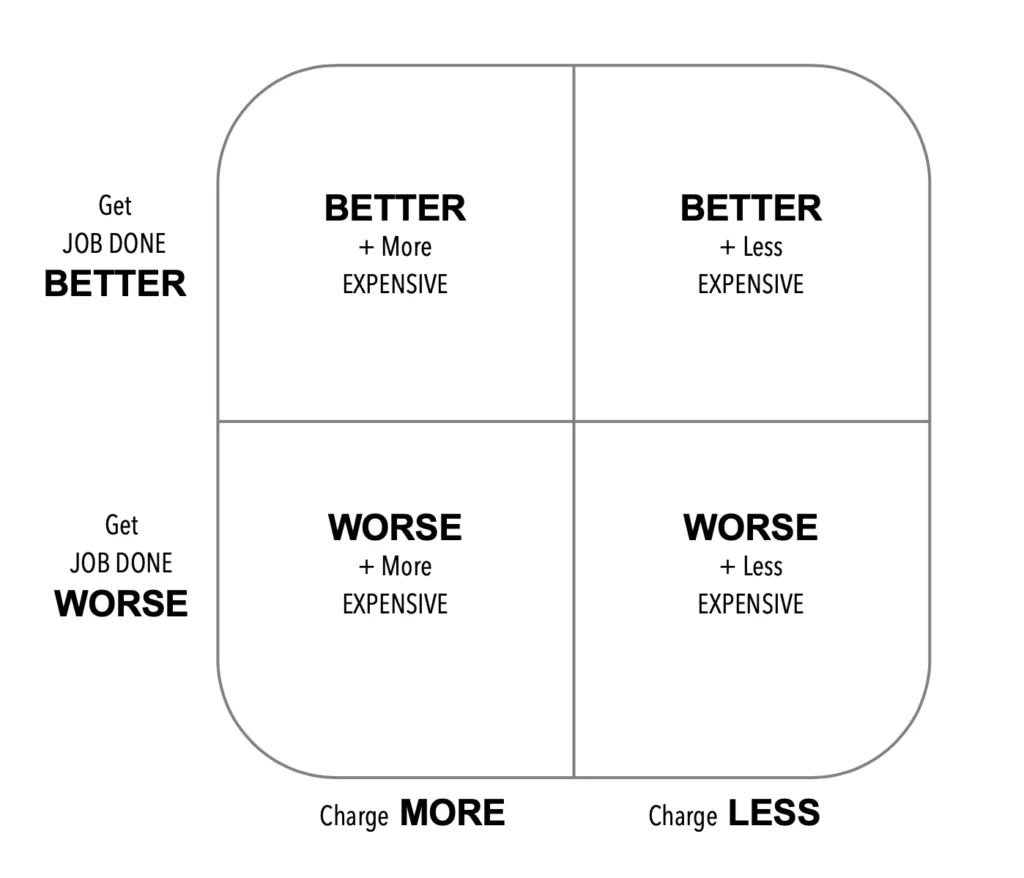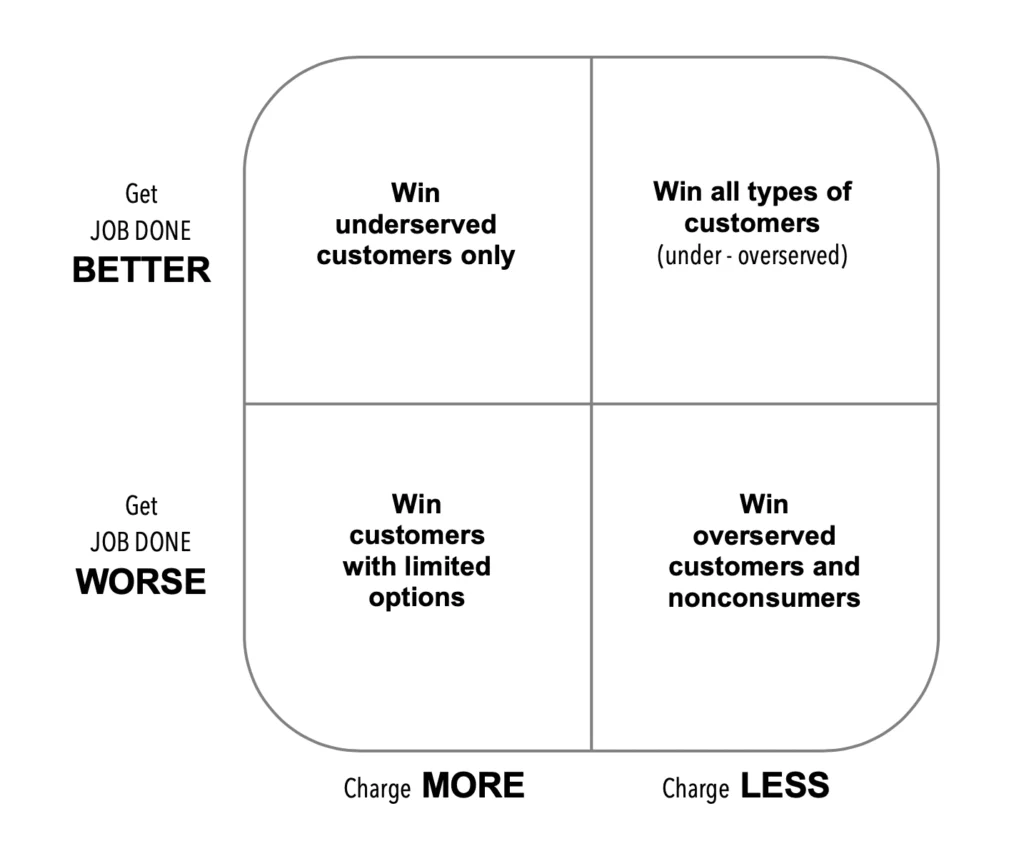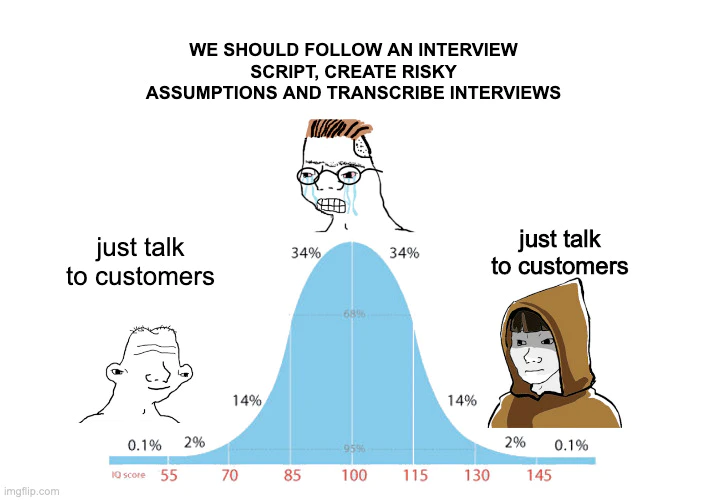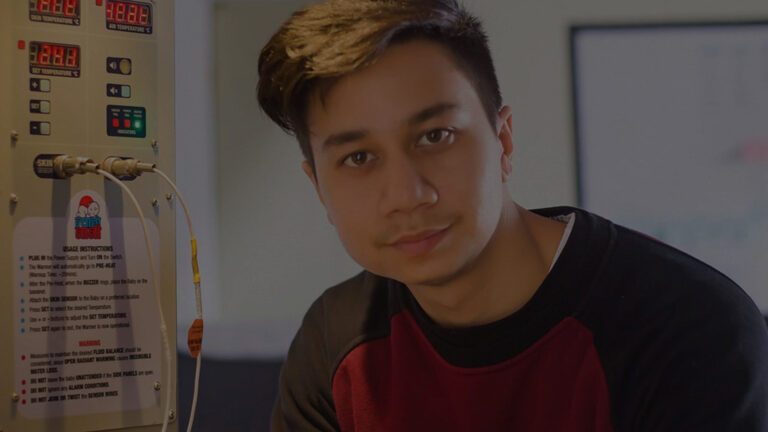As a business coach at Global School for Entrepreneurship, Jeroen Coelen guides students along in their start-up journey, as he provides coaching opportunities where students can expect honest feedback, inspiration, and relevant advice. Jeroen uses his expertise in navigating the early stages of start-ups in order to inspire students to begin new ventures with confidence. With his blogs, Jeroen offers practical tips on developing problem-fit solutions, suggests ways to better understand your customers, and recommends frameworks that help make sense of the chaos of start-ups. We are lucky to host Jeroen’s blogs, as they provide unique insights regarding the nature of the start-up process, continue reading below.
how do your customers see you?
A simple, crucial question, which is hard to answer.
In this piece, I will give you a framework to help you out.
I got it from the free Job to be done book by Anthony Ulwick. It’s a good book, and free. Go check that out.
Note: there are multiple views of Job to be Done, read about that here.
the framework

You should ask yourself, compared to the alternative:
- Does your solution do a better or worse job?
- Are you charging less or more for this solution?
Not all solutions are better. In fact, compared to a lot of solutions, it’s performing worse. I’ll get to that in a bit.
Challenge: Before continuing to read, can you think of some examples for each of the 4 categories?
1. Better + more expensive
Here we find solutions that are premium. Pay more, get more
- Uber Black → Better cab, more expensive
- Business or First class flights → Better experience, more expensive
- Luxury cars or goods → Arguably an expensive Mercedes is a better car than a cheap Toyota
2. Better + less expensive
If you can achieve this, that’s great. It can capture a lot of customers, basically a win win.
- Uber → Better compared to hauling cabs, often cheaper
- AirBnB in the early days → Better experience, cheaper (nowawadays AirBnBs and hotels are sometimes equally expensive)
3. Worse + more expensive
When I’m doing workshops, this category always is the hardest. Why would people pay more for shitty solutions? Well, when they have limited options.
- Food at Airports → Not the best, quite expensive
- Food at Football stadium → Did you really like that €8 snack?
4. Worse + less expensive
This category is interesting because it can actually unlock new customers. Customers that felt overserved by the existing solutions. Examples:
- Primark → For people that feel H&M is too high quality and too expensive
- Google Docs → Compared to MS Office for quite some people (not everyone)
- Yoga with Adriene on Youtube → For people that feel a personal yoga session is too expensive.
Types of customers to win

You don’t have full control over where you are in this framework. Obviously, it seems tempting to want to be disruptive, but if your solution is set in stone, there’s less freedom.
discover the customers’ view
Most people think their solution is superior. However, this depends on the frame.
Superior compared to what? Customers coming from SalesForce to Hubspot might have a different view of that solution than customers coming from Excel to Hubspot, downgrade vs. upgrade.
You can see that depending on the frame, some solutions might jump into different categories. This is okay. You should base this on data, on interviews.
Maybe you have to create two segments: the downgrade and the upgrade. This will in turn create different marketing messages.
Again, this is a lens to look at current solutions in a market through the eyes of customers. It might help you to cluster competitive solutions, identify what sets certain solutions apart.
for this you need data
You can’t hypothesize this. You should build this from customer data. Relevant meme:

In general, I would recommend reading Chapter 3 of the book for more examples of this framework and how to apply this to your business strategy.









